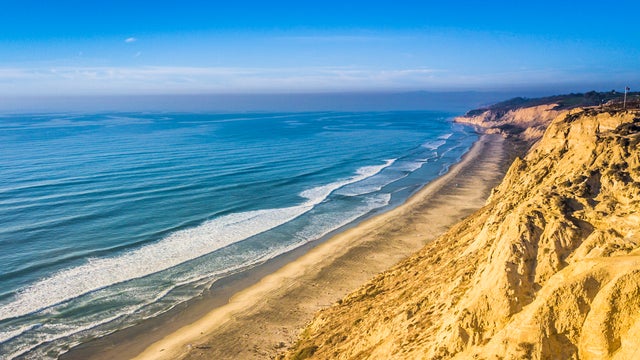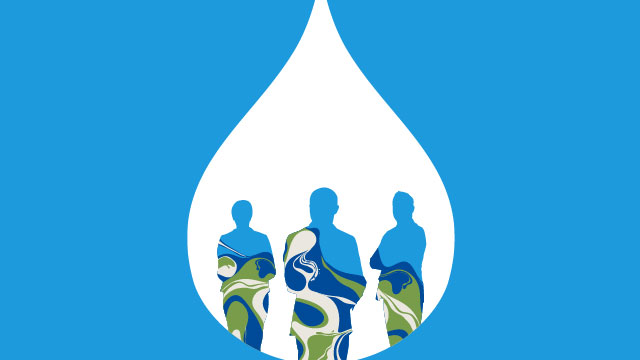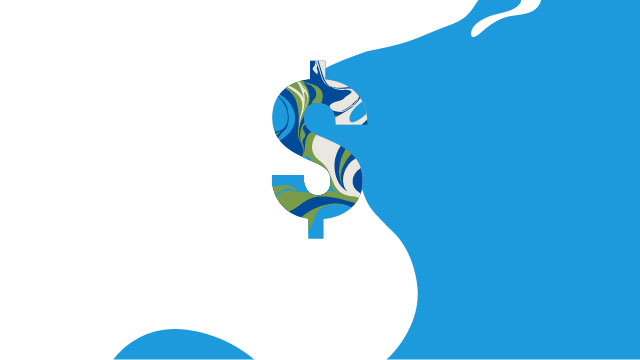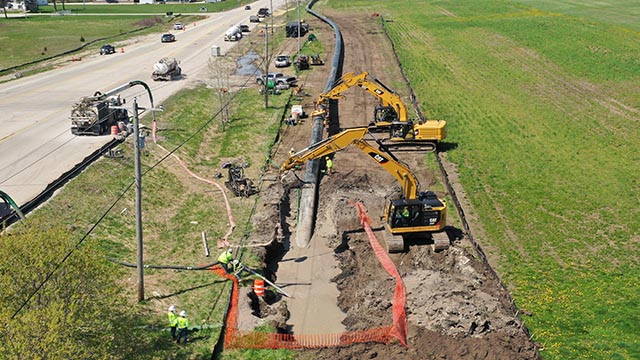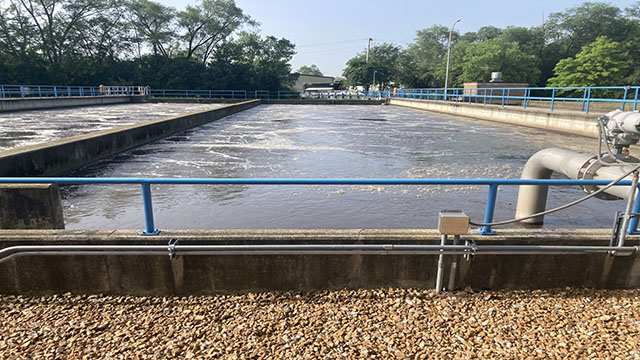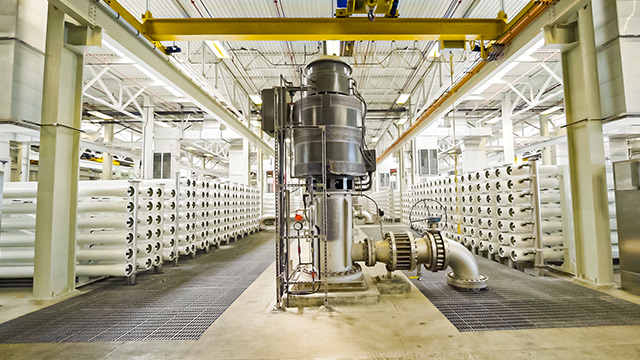For decades, talk of water has rested on philosophical premises, ranging from arguments that it’s a human right to insistences that it’s a property right or even a commodity. Regardless of the philosophical posture, potable water is anything but free. Utilities incur costs to get the water, treat it to safe drinking standards and then supply it through an often-aging system of pipes and pumping stations to the consumer. Customers expect that when they turn on the faucet, they will get potable water at adequate pressure and enough of it for their on-demand needs. They expect to pay for this level of service but at reasonable prices.
The question then is, “Is water affordable?” That depends on who you ask — and more precisely what defines “affordable.”
The COVID-19 pandemic is challenging how we all view what is normal. Pandemics beyond national disasters take utility planning for water utilities to a new level, along with different operational practices to ensure that affordability of supply of service stays in place for its customers. The drop in revenues that utilities experience during a pandemic challenge a utility’s reserves, how rates are structured and how a utility looks to manage its customer services and operations.
Only with time will the extent of COVID-19’s financial implications on the water industry become clearer. But Black & Veatch’s survey of nearly 300 water industry stakeholders for this 2020 Strategic Directions: Water Report adds insights about the elusive value of water, beginning with how the decision-makers in that space define it.
2020 Strategic Directions: Water Report
With its survey of nearly 300 water industry stakeholders as its backbone, Black & Veatch’s 2020 Strategic Directions: Water Report comprehensively analyzes the sector’s complex landscape of challenges and opportunities. The leveraging of data in driving decision-making and optimizing efficiencies in water and wastewater systems is widening even as infrastructure continues to age, climate change strains assets, and the COVID-19 pandemic’s financial havoc pressures the bottom lines of many utilities through lost revenues. We look at all of that and more.

Water Affordability: The Industry’s Perception
Conventional wisdom would cast water affordability as providing water at a reasonable price to customers. Black & Veatch’s survey shows it’s not that simple.
More than two-thirds of respondents described affordability as more than merely charging enough to provide customers with safe drinking water or wastewater services. It’s also about funding capital improvements or for covering operations and maintenance — a nod to addressing the industry’s vexing issue of aging infrastructure. Nearly one-quarter of respondents — 24 percent — consider affordability as providing a basic level of water service.
A scant 4 percent identified affordability as keeping rates as low as possible or discounting the charge to fixed- or low-income customers.
The industry’s prevailing, broader definition of affordability isn’t necessarily a bad thing. Still, it requires effectively explaining it to ratepayers by educating them that it is about more than simply the charge for water flowing through the tap — and the infrastructure to remove used water. And that needed funding for infrastructure upgrades may be influenced by city councils, boards or other civic overseers who may decide rate increases through the prism of election cycles.
As much as consumers expect wastewater to be removed and safely disposed of to protect the environment, they expect reliable, clean and safe drinking water, making it incumbent on the utility to help customers understand and appreciate the cost involved in providing that resource and service. One-third of respondents to Black & Veatch’s survey said their customers probably don’t understand what it takes to supply them with clean, potable water, as well as wastewater and stormwater services. In addition, one in five respondents lamented that their customers don’t have the baseline knowledge about the service they receive.
Bridging that education divide facilitates utilities making a case for modest rate increases to underwrite long-overdue upgrades of increasingly strained infrastructure — or to save for when that infrastructure fails. In the fallout of the COVID-19 outbreak, many expect significant pressures to further defer rate increases until the economy recovers and the millions of jobs are returned.
Customer Assistance, Discounts
Because the online survey for this report was conducted during a three-week span ending on March 30, 2020 — during which the COVID-19 pandemic was accelerating — it’s difficult to discern how much of an impact that global outbreak had on the responses. More specifically, whether utilities either by outside mandates or voluntary gestures of goodwill broaden their customer service when it comes to offering discounts to customers in need.
Through the timing of this survey, 40 percent respondents say they’re not compelled by regulators to offer rate-discount programs to seniors or others, so they don’t, perhaps, because of the administrative work required. A similar amount — 38 percent — report that in the absence of regulatory guidance, they have such programs. Just 11 percent say they are required to offer discounts or customer aid.
It’s unclear whether the COVID-19 pandemic will dramatically influence more water utilities to offer discounted services long-term. Many water utilities — often at the behest of their states or municipalities — are giving customers financially strapped by outbreak-forced layoffs a break by maintaining service to those behind in payments. Some utilities are required to go a step further and turn shut-off customers back on. That’s keeping in mind that shutoffs are one of the few enforcement tools utilities have to collect on past-due accounts.
Financial Resilience
Commissioned by two leading trade groups — the American Water Works Association (AWWA) and the Association of Metropolitan Water Agencies – an assessment released in April 2020 indicated an aggregate financial impact of COVID-19 on drinking water utilities of approximately $13.9 billion, representing an overall 16.9 percent financial toll. Wastewater utilities were expected to lose an estimated $16.8 billion in lost revenues, along with the costs of maintaining sewer access.
The National Association of Clean Water Agencies (NACWA) warned that without taxpayer help to the industry, the revenue loss from forgiving customer debts and providing services without payment during the pandemic ultimately would be passed on to water customers in subsequent years and lead
to future rate increases.

Often saddled with the costly need to upgrade their chronically aging infrastructure but constrained in doing so by the rates they manage to collect, utilities generally aren’t considered to be flush with cash. But a majority of respondents to Black & Veatch’s survey suggest they’ve got enough on hand to weather a setback.
When asked to gauge their utility’s financial resilience, slightly more than half — 51 percent — report they have “substantial” cash reserves to withstand an adverse, isolated event. Thirty percent of respondents said they have cash reserves, though a major event would be “detrimental”.
Left to question is what they perceive to be a “substantial” amount in the bank, and whether those who say they have it have false confidence. Is it considered enough to get them through a catastrophic event like a flood that puts them out of operation for a few months? Or are they viewing their reserves as simply the amount to get past a service-disrupting infrastructure or equipment failure? How much money on hand is the right amount?
COVID-19 and its financial fallout may answer much of that, showing just how fiscally ready water and wastewater providers are in dealing with something that suddenly sinks their revenues through delinquent accounts and lost customers. Utilities would be well-served using this pandemic as a learning moment by strengthening their cash reserves — at least enough to cover four to six months of costs, with perhaps a line of credit on standby. Moreover, the need for innovative approaches to address the affordability and develop strategies and programs assisting those in need will continue to be an ongoing concern — pandemic or not.
About the Authors
Mike Orth is executive vice president and executive managing director of Black & Veatch’s water business in the Americas. Orth guides the company’s growth efforts in supply, storage, treatment, and conveyance by delivering projects for clients through both traditional methods and alternative solutions such as design-build, performance contracting, and public-private partnerships.
Ann Bui is a managing director and leads Black & Veatch Management Consulting Group’s water market business. Besides providing clients with strategic financial management strategies, her responsibilities include driving growth and innovation to water utilities in the areas of financial and advisory planning, advanced metering, customer experience, asset integrity, and enterprise risk management services. Bui has more than 30 years of experience with clients in North and South America, Europe, and Asia.
Bruce Allender is chief operating officer of infraManagement Group LLC, a wholly-owned subsidiary of Black & Veatch. He has more than 25 years of experience in the water and wastewater sector and has been part of teams that have proposed and implemented design-build and public-private partnerships in North America, Australia and Asia Pacific for the water and wastewater municipal and industrial marketplace.

